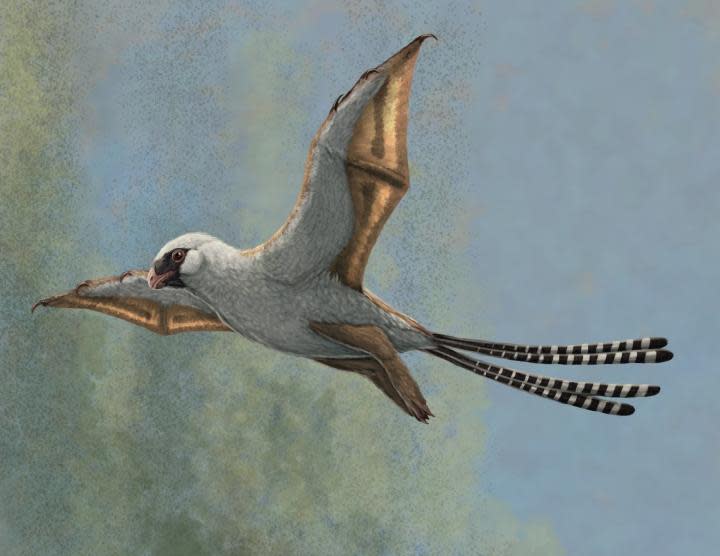Dinosaurs with bat wings ‘could barely fly, like chickens’

Two tiny dinosaurs that had bat-like wings could only manage a clumsy glide and were wiped out by birds and other dinosaurs, scientists have said.
Yi and Ambopteryx were small animals from Late Jurassic China that lived about 160 million years ago.
They could only glide, researchers believe, after reconstructing them by scanning fossils.
This meant they were unable to compete with rivals in the forests where they lived, and died out in just a few million years.
“We know some dinosaurs could fly before they evolved into birds,” said Professor Larsson, director of McGill University's Redpath Museum in Quebec.
“What this shows us is that at least one lineage of dinosaurs experimented with a completely different mode of aerial locomotion. Gliding evolved countless times in arboreal amphibians, mammals, lizards, and even snakes – and now we have an example of dinosaurs.”
The research was published in the journal Cell.
Read more; Ancient remains could rewrite history of human intelligence
Thomas Dececchi, assistant professor of biology at Mount Marty University in Yankton, South Dakota, said: “Once birds got into the air, these two species were so poorly capable of being in the air that they just got squeezed out.
“Maybe you can survive a few million years underperforming, but you have predators from the top, competition from the bottom, and even some small mammals adding into that, squeezing them out until they disappeared.”
Weighing in at less than two pounds, they are unusual examples of theropod dinosaurs, the group that gave rise to birds.
Most theropods were ground-loving carnivores, but Yi and Ambopteryx were at home in the trees and lived on a diet of insects, seeds and other plants.
Read more: Ancient skull found in China could rewrite history of the human race
Dececchi and his collaborators scanned fossils using laser-stimulated fluorescence (LSF), a technique that uses laser light to pick up soft-tissue details that can’t be seen under standard white light.
Later, the team used mathematical models to predict how they might have flown, testing many different variables like weight, wingspan and muscle placement.
Dececchi said: “They really can’t do powered flight. You have to give them extremely generous assumptions in how they can flap their wings.
“You basically have to model them as the biggest bat, make them the lightest weight, make them flap as fast as a really fast bird, and give them muscles higher than they were likely to have had to cross that threshold.
“They could glide, but even their gliding wasn’t great.”
While gliding is not an efficient form of flight, since it can only be done if the animal has already climbed to a high point, it did help Yi and Ambopteryx stay out of danger while they were still alive.
Dececchi said: “If an animal needs to travel long distances for whatever reason, gliding costs a bit more energy at the start, but it’s faster. It can also be used as an escape hatch. It’s not a great thing to do, but sometimes it’s a choice between losing a bit of energy and being eaten.
“Once they were put under pressure, they just lost their space. They couldn’t win on the ground. They couldn’t win in the air. They were done.”

 Yahoo Finance
Yahoo Finance 
